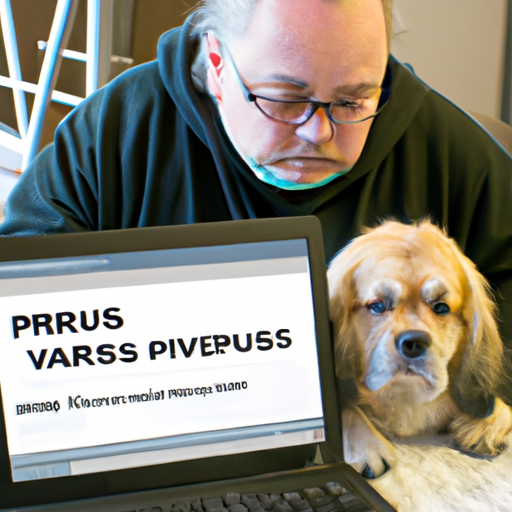Dogs are our best friends; they bring joy and happiness to our lives. But as any good friend, they also require care and attention. One of the most concerning health issues for dogs is Parvo, a highly contagious virus. In this article, we’ll delve into the ways dogs can catch Parvo, provide a detailed understanding of the virus, and share precautionary measures you can take as a caregiver.
H2: Understanding Parvo
Parvo, short for Canine Parvovirus, is a highly contagious viral disease that can be lethal to puppies and adult dogs. It primarily affects the dog’s gastrointestinal tract, causing symptoms like vomiting, loss of appetite, and severe diarrhea which can lead to dehydration and weight loss.
Parvo is a hardy virus. It can survive on surfaces for months, resisting most household cleaners. This makes it easier for dogs to catch it, even from indirect contact with an infected dog’s feces.
H2: How Dogs Catch Parvo
There are several ways your furry friend can catch Parvo:
- Direct Contact: This is the most common route. If your dog sniffs, licks, or consumes infected feces, they can contract the virus.
- Indirect Contact: Parvo can live on objects like food dishes, shoes, or clothes. If your dog comes into contact with these contaminated objects, they can get infected.
- People: Yes, humans can carry the virus on their body or clothes and transfer it to their dogs.
H2: The Risk Factors
Certain factors increase the risk of a dog catching Parvo. These include:
- Age: Puppies between six weeks and six months old are most at risk.
- Breed: Certain breeds like Rottweilers, Dobermans, and American Pit Bull Terriers are more susceptible.
- Vaccination Status: Unvaccinated or incompletely vaccinated dogs are at higher risk.
| Risk Factor | Details |
|---|---|
| Age | Puppies 6 weeks – 6 months old |
| Breed | Rottweilers, Dobermans, American Pit Bull Terriers |
| Vaccination Status | Unvaccinated or incompletely vaccinated dogs |
H2: Preventing Parvo
As a caregiver, there are steps you can take to protect your dog:
- Vaccination: This is the most effective way to prevent Parvo. Puppies should be vaccinated between 6-8 weeks of age and get booster shots every 3-4 weeks until they’re 16 weeks old.
- Avoid Unvaccinated Dogs: Until your puppy is fully vaccinated, avoid areas with other dogs.
- Regular Cleaning: Clean and disinfect your dog’s living space regularly.
H2: FAQs
Q: How long does Parvo last in a dog?
A: With proper treatment, most dogs recover in about a week.
Q: Can my dog get Parvo from the park?
A: Yes, if an infected dog has been there.
Q: Can humans get Parvo from dogs?
A: No, Canine Parvovirus cannot infect humans.
Q: How long does the Parvo virus live on surfaces?
A: It can survive on surfaces for several months.
Remember, as a caregiver, awareness is the first step in prevention. Now that you know how dogs catch Parvo, you can take the necessary steps to keep your furry friend safe.



